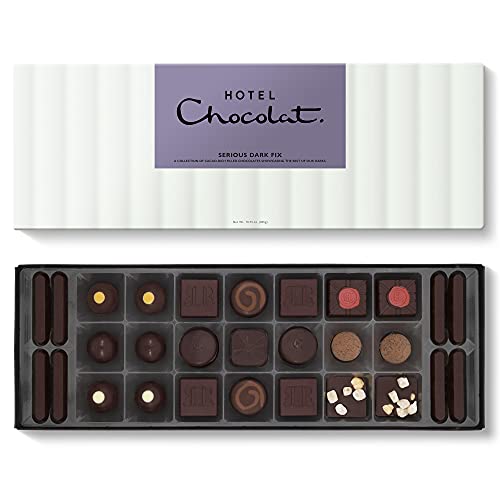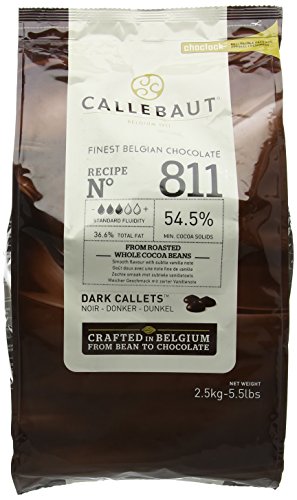Understanding Dark Chocolate: What Makes It Special?
The Basics of Dark Chocolate
When we think of chocolate, many of us picture the sweet, creamy varieties we often see in shops. Dark chocolate, however, stands out due to its higher cocoa content and lower sugar levels. Typically containing at least 70% cocoa solids, dark chocolate offers a rich, intense flavour that is distinct from its milk-based counterparts. This type of chocolate is usually made from cocoa beans, sugar, and fat, without the addition of milk solids. Its robust taste can vary significantly from brand to brand, influenced by the origin of the cocoa beans and the manufacturing process.
The Role of Cocoa in Dark Chocolate
Cocoa is the heart of dark chocolate, providing not just the flavour but also numerous health benefits. The unique blend of flavonoids and natural compounds found in cocoa beans contributes to the chocolate’s signature taste and nutritional profile. Unlike other types of chocolate, the processing of dark chocolate retains more of these beneficial compounds, which can play a role in overall health.
Understanding Labels and Ingredients
Navigating the labels on dark chocolate can be an adventure in itself. Look out for terms like ‘bittersweet’ or ‘semisweet’ to understand sweetness levels. The ingredient list is also crucial; the fewer ingredients, the better the quality of chocolate, as it often reflects a more authentic and intense chocolate experience. Dark chocolate that contains added ingredients such as artificial flavours or preservatives might not provide the same health benefits or pleasurable taste.
Choosing the Right Dark Chocolate: Key Factors to Consider
Cocoa Percentage
When selecting dark chocolate, the cocoa percentage is a fundamental aspect to consider. Higher cocoa percentages usually mean a more intense flavour and less sugar. If you’re adventurous with your taste, a bar containing 85% cocoa might be an exhilarating choice, while those just starting their dark chocolate journey may prefer something around 70%. The cocoa percentage can greatly affect the bitterness and complexity of flavours.
Origin of the Cocoa Beans
The origin of cocoa beans can significantly influence the taste of dark chocolate. For instance, beans from Madagascar may have fruity notes, while those from Ghana often exhibit a deep, rich flavour. Trying chocolates from different regions can be an enjoyable exploration of flavours, and it might help us identify our preferences based on specific origins.
Quality Over Quantity
It’s tempting to choose larger bars that are cheaper, but when it comes to dark chocolate, quality is vital. Opt for artisan chocolate brands or smaller producers who emphasize ethical sourcing and high-quality ingredients. We often find that a small piece of exceptional chocolate provides more satisfaction than a larger amount of mediocre chocolate.
Tasting Dark Chocolate: How to Savor Every Bite
Preparing for a Tasting Experience
To truly appreciate dark chocolate, we can prepare ourselves for a tasting experience. Start by breaking off a small piece and observing its appearance; note the sheen and the snap sound when broken. Then, inhale the aroma; this will give us clues about the flavour profile we’re about to experience.
The Art of Tasting
When tasting dark chocolate, allow the piece to melt on your tongue rather than chewing it immediately. This process releases the complex flavours and we begin to discern different notes—fruity, nutty, or even floral—that might be present. Take your time and enjoy the lingering finish, which adds to the overall tasting experience.
Pairing Dark Chocolate with Other Flavours
Pairing dark chocolate with complementary flavours can elevate our tasting experience. For instance, enjoying a piece alongside a glass of red wine can enhance both offerings. Additionally, nuts, fruit, or even a sprinkle of sea salt can create delightful contrasts and highlight the nuances of the chocolate.
Health Benefits of Dark Chocolate: A Delicious Reward
Rich in Antioxidants
Dark chocolate is not just a treat; it’s also packed with antioxidants, which help combat free radicals in our bodies. This means that indulging in a piece of quality dark chocolate can support our health while satisfying our taste buds.
Boosting Heart Health
The flavonoids found in dark chocolate can have a positive impact on heart health. These compounds may improve blood flow and lower blood pressure. The enjoyment we get from dark chocolate can unknowingly contribute to our cardiovascular wellness.
Mood Enhancer
Consuming dark chocolate can also provide a mood lift. It stimulates the production of endorphins, making us feel happy and content. Thus, reaching for a square of dark chocolate might not just be pleasurable but also a smart choice for boosting our spirits.
Incorporating Dark Chocolate into Your Diet: Simple Ideas and Recipes
Easy Recipes to Try
Incorporating dark chocolate into our meals can be simple and enjoyable. We can melt dark chocolate to drizzle over fruits like strawberries or bananas, turning a healthy snack into a delightful dessert. Alternatively, chopping dark chocolate into chunks to mix with oatmeal or pancakes can add richness and a touch of sweetness.
Adding It to Savoury Dishes
Dark chocolate can even find its way into savoury dishes. A small amount grated into a rich chilli or a mole sauce can enhance depth of flavour, making our meals more complex and enjoyable. Experimenting with dark chocolate in savoury recipes can lead to delightful surprises.
Creating Healthy Snacks
For a quick, nutritious snack, we might consider making dark chocolate bark. Simply melt dark chocolate and spread it out on a baking tray, topping it with nuts, seeds, and dried fruits before letting it set. This easy-to-make treat allows us to enjoy the indulgent taste of chocolate while packing in nutrients.



















